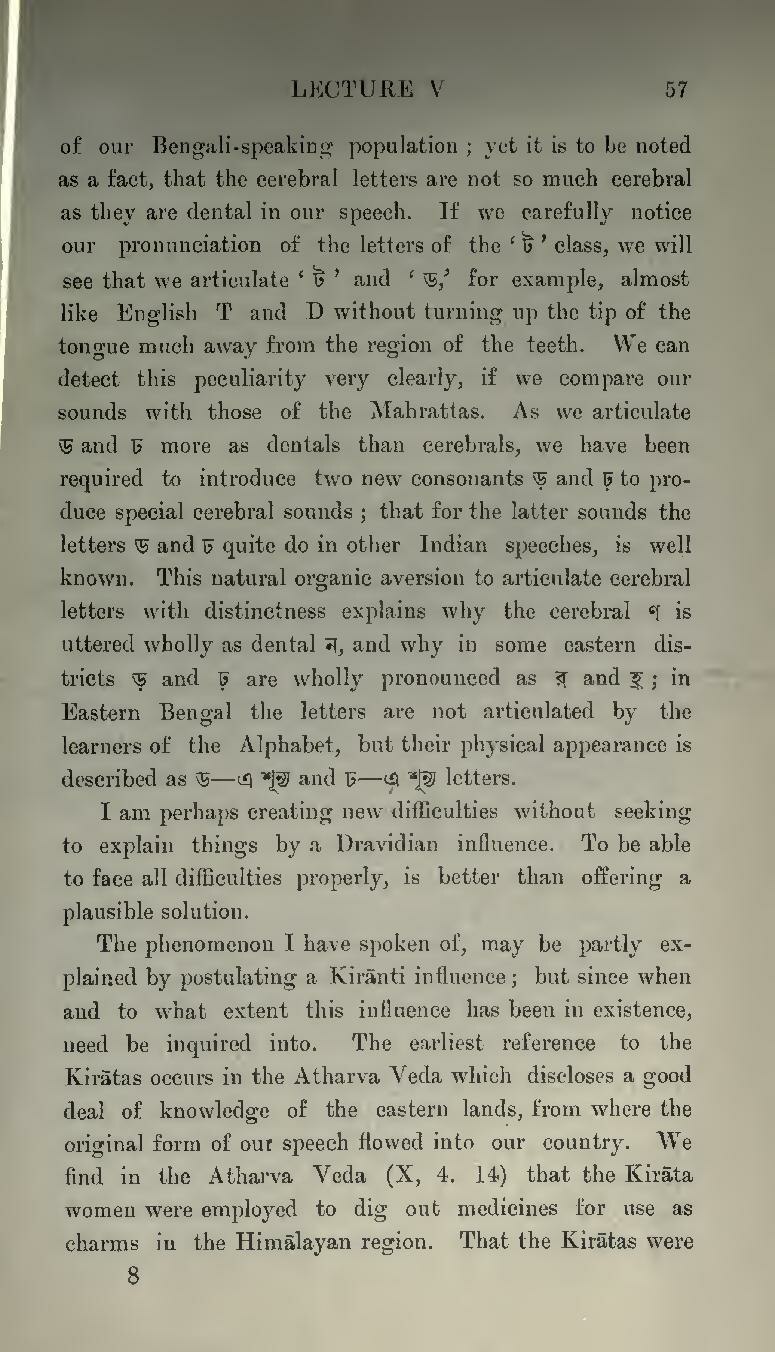of our Bengali-speaking population; yet it is to be noted as a fact, that the cerebral letters are not so much cerebral as they are dental in our speech. If we carefully notice our pronunciation of the letters of the 'ট' class, we will see that we articulate 'ট' and 'ড,' for example, almost like English T and D without turning up the tip of the tongue much away from the region of the teeth. We can detect this peculiarity very clearly, if we compare our sounds with those of the Mahrattas. As we articulate ড and ঢ more as dentals than cerebrals, we have been required to introduce two new consonants ড় and ঢ় to produce special cerebral sounds; that for the latter sounds the letters ড and ঢ quite do in other Indian speeches, is well known. This natural organic aversion to articulate cerebral letters with distinctness explains why the cerebral ণ is uttered wholly as dental ন, and why in some eastern districts ড় and ঢ় are wholly pronounced as র and হ্র; in Eastern Bengal the letters are not articulated by the learners of the Alphabet, but their physical appearance is described as ড–এ শূন্য and ঢ–এ শূন্য letters.
I am perhaps creating new difficulties without seeking to explain things by a Dravidian influence. To be able to face all difficulties properly, is better than offering a plausible solution.
The phenomenon I have spoken of, may be partly explained by postulating a Kirānti influence; but since when and to what extent this influence has been in existence, need be inquired into. The earliest reference to the Kirātas occurs in the Atharva Veda which discloses a good deal of knowledge of the eastern lands, from where the original form of our speech flowed into our country. We find in the Atharva Veda (X, 4. 14) that the Kirāta women were employed to dig out medicines for use as charms in the Himālayan region. That the Kirātas were
